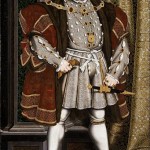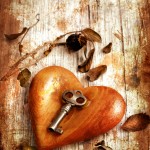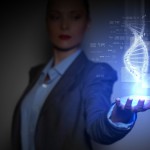Weekly Wrap Volume 26
 When a Tulip Cost More than a House
When a Tulip Cost More than a House
Despite how it sounds, “Tulipmania” does not refer to just a general love of tulips; it was actually one the world’s first recorded major financial bubbles. Long before the dot com frenzy or the real estate bubbles of recent decades, there was Tulipmania in the Netherlands beginning around 1624 and reaching its peak from 1636 to 1637. While the extent of the mania, in terms of how widespread it was, is still largely debated, as is what all the elements involved were that caused it- nevertheless, for a brief time, Tulip prices in the Netherlands rose to ridiculous levels, with one flower costing more than the annual income… (more)
Making copies of architectural drawings hasn’t always been the easiest thing in the world to do. For the majority of human history, the most economical solution was simply to have someone make a tracing of the original plans. In the mid-nineteenth century, the process abruptly became much quicker and easier thanks to famed polymath Sir John Herschel. In 1842, Herschel invented a method to easily copy drawings using potassium ferrocyanide and ammonium iron citrate. The exact method, called cyanotype, is performed as follows. First, you take a drawing of the plans done on relatively translucent tracing paper or cloth and place it on top of and attach it to paper… (more)
War is ugly. Especially in contrast to the beauty of centuries-old European art. That was the very the reason that the Monuments, Fine Arts, and Archives program was established in 1943, to protect fine works of art in every form from the horribleness of World War II. The men and women who were part of this program and assigned to the task of preserving, restoring, finding, and returning these priceless works of art became known as “The Monument Men.” By 1943, Europe was in the throes of perhaps the most destructive war of all time… (more)
 The Wives of King Henry VIII, Part One
The Wives of King Henry VIII, Part One
“Divorced, beheaded, died, divorced, beheaded, survived,” as the old rhyme goes. King Henry VIII is known for having a huge number of wives and getting rid of nearly all of them in some way or another. As most people know, he was desperate for a son and like most people during that time period believed that the woman in question was the determining factor for the particular gender of any babies. Wife #1: Catherine of Aragon: Henry’s first and longest marriage was to Catherine of Aragon. Catherine… (more)
 The Surprising Truth About Cousins and Marriage
The Surprising Truth About Cousins and Marriage
In modern western society, marrying your cousin is not well accepted, particularly in the United States. Through a combination of old prejudices and present-day conventional wisdom about inherited birth defects, first cousin marriage is seen by many as a little too close for comfort, as well as a bad idea if you want children. However, first cousin marriage is far more common, and far less dangerous, than many of us have been led to believe, as… (more)
Bonus President’s Day Facts:
- Heaviest President in U.S. History: The the 27th President of the United States, President William Howard Taft (serving from 1909 to 1913) was the heaviest President in U.S. history. He was 5’11″ tall and weighed 290 pounds. Not only was he the heaviest, he was also the last President to regularly sport facial hair. In 1921, Taft became the Chief Justice of the United States. He is the only person to have ever served in both offices.
- The Secret Service: Abraham Lincoln established the Secret Service on the day he was shot by John Wilkes Booth. Unfortunately, even had the organization been instituted earlier, it wouldn’t have helped. The Secret Service in the beginning had no part in protecting the President, but rather were tasked with cutting down on the amazing amount of counterfeit money circulated in the United States at the time (hence why until March of 2003 they were a branch of the U.S. Department of the Treasury). It is estimated that about 1/3 of the U.S. currency in circulation was counterfeit when Lincoln signed the piece of legislature that would establish the Secret Service.
- Presidential Pajamas: President Thomas Jefferson was never a fan of formal affairs, and was often reported to have worn his pajamas while meeting with Foreign dignitaries. On one such occasion, when meeting with British Minister to the U.S., Andrew Merry, he wore his PJ’s. Merry was not amused and he was later quoted as saying, “I, in my official costume, found myself at the hour of reception he had himself appointed, introduced to a man as President of the United States, not merely in an undress, but actually standing in slippers down to the heels, and both pantaloons, coat and under-clothes indicative of utter slovenliness and indifference to appearances, and in a state of negligence actually studied.”
- The President’s Car: Franklin Roosevelt was the first President to have an armored car. In 1941, the Secret Service found themselves in a bit of a jam. The Japanese had just bombed Pearl Harbor and President Roosevelt needed a ride to address both houses of congress. Normally, they would’ve just driven him in his 1939, V12 Convertible. However, the attack on Pearl Harbor had the Secret Service nervous that an attack may be made on the President. They had roughly 24 hours to come up with an armored vehicle to transport the President and thanks to congress, they had a spending limitation of only $750 (which amounts to roughly $10,500 in today’s terms). Thankfully, a secret service agent named Mike Reilly remembered seeing an armored 1928, 341A Cadillac Town Sedan at the Treasury Department’s impound lot. It was none other than Al Capone’s Cadillac that had been seized when he was arrested for tax evasion.
- The Bull Moose: Teddy Roosevelt was shot by saloon keeper John Schrank on October 14, 1912. His life was saved thanks to a steel eyeglass case and his 50 page speech he was carrying in his jacket, both of which the bullet had to pass through. Despite being shot in the chest, he decided to go ahead with his speech, rather than seek medical aid immediately, after concluding that because he was not coughing up blood, the bullet must not have penetrated that deeply into his chest. His opening line for the speech was, “Ladies and gentlemen, I don’t know whether you fully understand that I have just been shot; but it takes more than that to kill a Bull Moose.” X-rays later showed that the bullet had lodged 3 inches into his chest and was embedded in his ample chest muscle.
- Pronunciation: Teddy Roosevelt’s last name was commonly mispronounced even in his own day. He was even once publicly criticized for “mispronouncing” his own last name by Mr. Richard E. Mayne who was the chairman of the Department of Reading and Speech Culture for the New York State Teachers Association. Mayne felt Roosevelt was “perpetuating a practice against which are set the principles of usage…” by pronouncing his name Rose-uh-velt rather than using common English pronunciation to pronounce it as it’s spelled. As a response to Mr. Mayne, Roosevelt explained that his name is from his Dutch ancestry and so is pronounced as the Dutch would have. Specifically, in Dutch the double “o” makes a long “o” sound, thus should be pronounced “Rose” rather than “Roos”. And, indeed “roos” in Dutch means “rose”.
- The Murderer: Andrew Jackson killed many men in his lifetime and not just on the battlefield. In 1806, Andrew Jackson dueled with famed marksman Charles Dickinson, killing him, after Dickinson insulted Jackson in a variety of ways including calling Jackson’s wife of bigamist. This latter point was a sore spot for Jackson as his wife really had married him while she was still married to her former husband. They traveled to Logan, Kentucky (where dueling was legal), and dueled on the shores of the Red River. Jackson conceded the first shot to Dickinson, choosing not to fire when he turned, even though Dickinson was considered an exceptional marksmen. Jackson and his second thought there was a chance Dickinson might miss, having to turn and shoot and trying to do so as quickly as possible before Jackson could get off a shot. So if he did miss or otherwise dealt a non-fatal blow, Jackson could then take his time and aim and kill him with the one shot he was allowed, as Dickinson would be required to stand still and give Jackson his chance. Things didn’t go quite as smoothly as hoped, as the shot fired by Dickinson hit Jackson in the chest just a few inches from his heart, breaking two ribs in the process. Not to be dissuaded, Jackson stayed on his feet and carefully aimed at Dickinson and pulled the trigger… only nothing happened as the hammer had stopped half-cocked. So he re-cocked it (which some counted as him breaking the rules and taking two shots) and pulled the trigger again, this time hitting Dickinson in the chest. A few hours later, Dickinson died as Jackson’s shot had damaged an artery.
Other Interesting Stuff:
 Can Bad Weather Cause Joints to Ache?
Can Bad Weather Cause Joints to Ache?
You might have heard grandma or grandpa predicting a storm because they “could feel it in their bones” and when a storm hit you probably thought they’d been watching the weather channel. Turns out, their joints *probably* do get a little achy when it’s about to rain. “Weather pain” is a sensation that was noticed by Hippocrates back in 400 B.C. Today, people suffering from arthritis… (more)
 The Fascinating History of Eugenics
The Fascinating History of Eugenics
The name deriving from the Greek “eugenes,” meaning “well-born,” it should be no surprise that “eugenics” seeks to engineer a better human race by purposefully selecting good traits, and eliminating bad ones, as is common when breeding animals. Over the years, eugenics has had a number of proponents, from some of the greatest and most admires thinkers in western civilization to the worst human monsters to ever walk the earth. Ancient Eugenics: Eugenics is as old as Plat… (more)
Ever wonder why certain foods seem to hang around after you swallow them? Aftertaste is generally classified as any taste that remains in your mouth after your food or drink has been swallowed or spit out. The exact mechanism that causes these sensations isn’t fully understood. In fact, understanding how our brains perceive specifics tastes is still a subject of debate. The current leading theory of taste is that it’s the perceived combination of several different sensory systems that include smell, flavor and what has been referred to as… (more)
This Week’s Podcasts:
| Share the Knowledge! |
|







